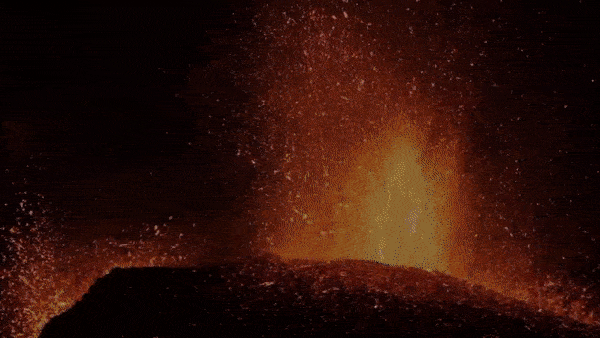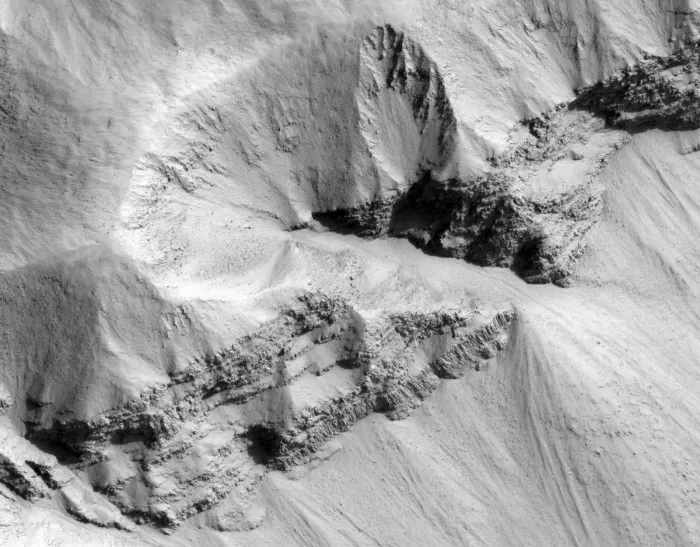A climate simulation study by NASA shows that super large volcanic events called "flood basalt eruptions" can significantly warm the earth and destroy the ozone layer that protects life from the sun's ultraviolet radiation - which is contrary to the previous view that "volcanic activity may lead to the cooling of the earth's climate".

Motion picture (from NASA Goddard video clip)
The simulation also shows that although common basalt eruptions on Mars and Venus help to warm the planet's climate, such activities can also lead to water loss, leaving them away from a long-term livable environment.
Unlike Pinatubo, which lasted for hours or days, or the explosive eruption of Tonga volcano in January this year, "flood basalt eruption" refers to an area with a series of eruption events.
Each event often lasts for hundreds of years, and the overall impact is more likely to reach hundreds of thousands of years - almost every mass extinction event and many extremely warm periods in history are accompanied by it.
In an article published in Geophysical Research Letters on February 1, 2022, Scott guzewich, from NASA Goddard Space Flight, said: "we expected severe cooling in the simulation, but we didn't expect the short cooling period to be covered by the warming effect".
Sediment image taken by Mars Reconnaissance Orbiter HiRISE (NASA / University of Arizona)
Although we are not surprised by the loss of ozone, the simulation reveals the potential scale of the harm - about two-thirds less than the global average, equivalent to the entire Earth's ozone layer as thin as the Antarctic hole.
Specifically, the researchers used Goddard's "earth observation system chemistry climate model" to simulate the four-year eruption stage of Columbia River basalt (CRB) in the Northwest Pacific Ocean of the United States 15 - 17 million years ago.
The model calculates the impact of the eruption on the troposphere. As the lowest layer of atmospheric turbulence, it contains most of the "dry and calm" water vapor.
CRB eruptions may be a collection of eruptive events (below 1.9 miles / 3 kilometers), and they work together to send material to the upper and lower tropospheres (about 8 ~ 10.5 / 13 ~ 17 kilometers respectively).
Assuming an eruption every four years and releasing about 80% of the sulfur dioxide gas, there will be about two years of net cooling and then about 15 years of warming on a global scale before warming overwhelms the cooling effect.
NASA Simulation Suggests Some Volcanoes Might Warm Climate(via)
It is reported that this study is the most comprehensive simulation of "flood basalt eruption" so far. It combines the influence of atmospheric chemistry and climate dynamics on each other, and reveals the important feedback mechanism missing in the early simulation research.
The new simulation takes into account the large amount of sulfur dioxide gas released during the eruption, and the chemicals in the atmosphere will quickly convert these gas molecules into solid sulfate aerosols.
The sunlight blocked back by these aerosols will cause the initial cooling effect, but it will also absorb infrared radiation, thus warming the upper atmosphere above and below the troposphere.
Then the water vapor, which is usually limited to the vicinity of the earth's surface, will mix into the already extremely dry stratosphere and even increase to 10000% at one time. Water vapor is a very effective greenhouse gas, and its infrared radiation will warm the earth's surface.

With the influx of water vapor into the stratosphere, the prediction can also explain the severity of ozone depletion, which involves several different ways.
First, after the volcanic eruption, the conditions for stratospheric circulation to prevent the formation of ozone have changed. Secondly, all water in the stratosphere will also enhance the ozone destruction of hydroxyl (- OH) radicals.
For details of this study, please also move to geophysical research letters ) View the full text.
The original title was "volcanic climate warming through radial and dynamic feeds of SO2 emissions".

